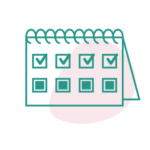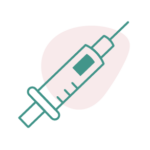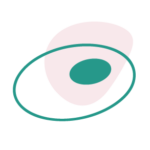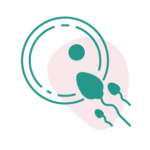Ovulation induction
What is ovulation induction
Ovulation induction is a medical treatment aimed at achieving optimal maturation of one or more eggs.
Medication for ovulation induction is usually injected intramuscularly or subcutaneously.
The prerequisites for ovulation induction are:
- A full gynaecological examination.
- Additional tests to rule out any associated conditions that may hinder or prevent pregnancy.
Factors such as maternal age, as well as other causes that may affect fertility, can influence the outcome of the treatment. For this reason, it is often necessary to perform more than one cycle to achieve a pregnancy.
It is generally recommended to carry out three to six treatment cycles. When a cycle is unsuccessful, it is important to review all the available information and make any necessary changes (a different dose, a more thorough monitoring, etc.). If, nevertheless, pregnancy is not achieved, the possible existence of other conditions and/or the advisability of resorting to other assisted reproductive techniques should be considered.
What are the phases of the treatment
The whole process, from the beginning of the treatment until the embryo is transferred, lasts approximately 15 days, and consists of the following phases:

Programming the induction cycle

Oocyte maturation

Ovulation monitoring

Ovulation

Timed intercourse

Preparation of the endometrium
Who it is for
This treatment is recommended for all women presenting ovulation abnormalities. These abnormalities are closely related to menstrual disorders such as amenorrhoea (absence of periods).
Possible complications
There is no scientific evidence of possible long-term side effects of ovulation induction treatments on women’s health.
There are two major risks of short-term ovulation induction treatment: the most common is multiple pregnancy (15-20%), the less common is ovarian overstimulation or hyperstimulation (less than 1%).
Monitoring the number and size of the patient’s follicles and her oestradiol levels during ovulation checks allows us to recognise those cycles that have a higher risk of hyperstimulation and multiple pregnancy and which, on a case-by-case basis, it may be advisable to cancel.
Once pregnancy has been achieved, the possible risks for the mother and the foetus are the same as for a spontaneous pregnancy, with the exception of the complications arising from a possible multiple pregnancy, such as prematurity or low birth weight.
Why choose us

Comprehensive monitoring with tests
We carry out a thorough monitoring with ovulation checks to determine the exact day of ovulation and, thus, schedule the most suitable time for sexual intercourse.

Psychological support
We provide psychological support in case of emotional overload, an issue which frequently affects women who undergo assisted reproduction treatments.

We are pioneers in reproductive medicine
We have more than 80 years’ experience behind us and a team of highly qualified and specialised professionals. The first Spanish test-tube baby was born in our clinic (1984) and Spain’s first egg donation treatment was carried out here, which culminated in the birth of twins (1988).

High success rate
The pregnancy rate for ovulation induction is between 15% and 25% per treatment cycle. These results will always depend on different factors such as maternal age.

Facilities and 24-hour emergency service
All medical consultations and tests can be carried out in the same medical centre, and we offer a 24-hour emergency medical service.
More information and prices
Or, if you prefer, fill in this form and we’ll call you
What is the best treatment for me?
If you don’t know which treatment is best suited to you, try our online pre-diagnosis.


